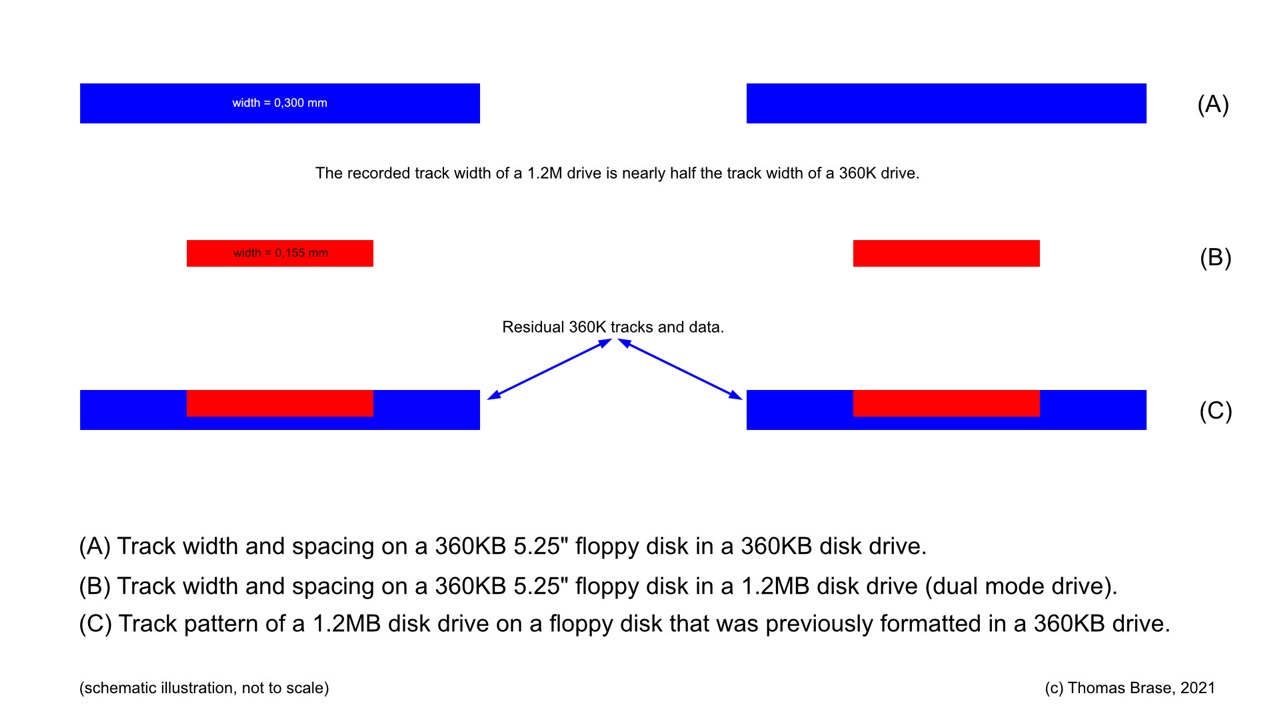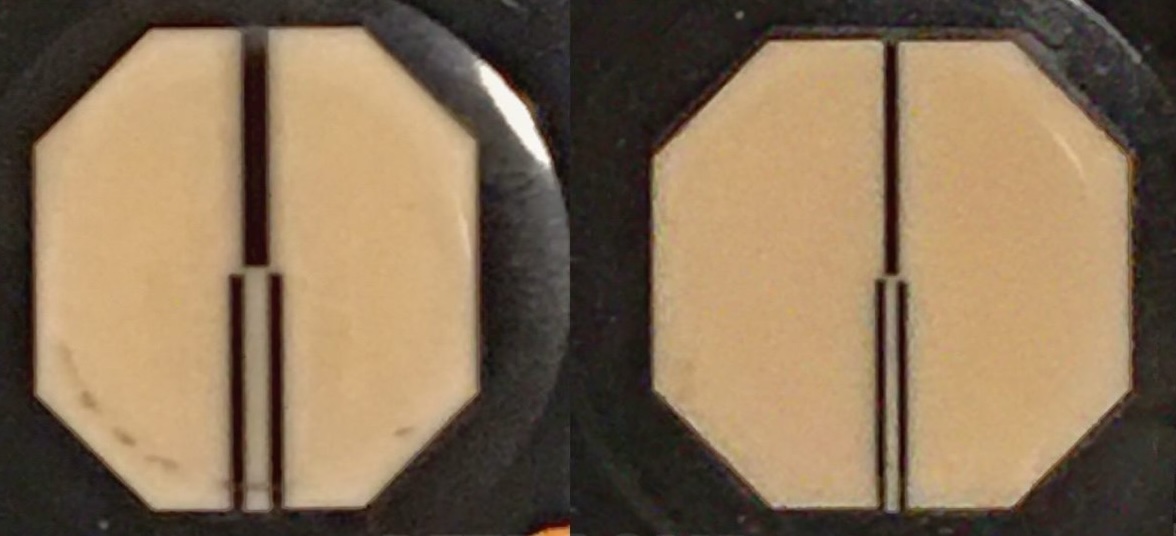48 tpi vs. 96 tpi
Last revision of this page: March 15, 2025

The Size Issue With the Heads
This problem was already not new in DOS times. For example, it is described in great detail in the magazine Micro Cornucopia, issue 15 of December 1983 on page 15. Here the problem is described in connection with the PRO-8 ROM on the Kaypro and 720 KByte drives.
Having 1.2M drives read or write to a 360K disk is a simple task. Just place a previously formatted 360K disk in the drive and use it normally. In other words, pretend that the drive is a 360K drive. Nothing special must be done. You can either read or write on the disk with absolutely no problems - yet.
You will have a problem if you decide to return the disk to a 360K drive and attempt to read it. Remember that the recorded track width of the 1.2M drive is half the track width of the 360K drive; therefore, if are any tracks have been previously recorded by an actual 360K drive, the tracks are twice as wide as the tracks recorded by the 1.2M drive. If you write to the disk with the 1.2M drive, you cannot overwrite the entire track width—only the center portion of it. When you return this disk to a 360K drive, the wider head system in the 360K drive then sees two signals on any overwritten tracks, and the new data is nestled within the image of the old data that could not be completely covered by the 1.2M drive. An immediate Abort, Retry, Ignore error from DOS usually is displayed for any updated portions of the disk.
To solve this problem easily, if you want to record data in an AT 1.2M drive and later read it properly in a 360K drive, make sure that you use brand-new disks for recording in the 1.2M drive. Because a new disk has no magnetic information on it, the smaller recorded track width can be written on the 1.2M drive and read properly in the 360K drive: The more narrow track is written in "clean space." The 360K drive, therefore, no longer is confused by any "ghost images" of previously recorded wider tracks. Other than starting with a brand-new disk, your only other option is to use a disk erased by a bulk eraser. You cannot erase a disk by reformatting it if has been in use. Formatting records actual data on the disk, and causes the track-width problem. The new or bulk-erased disk in fact must be formatted by the 1.2M drive for this procedure to work again. [1]

The following figure shows the r/w head of the TEAC FD-55E on the right. Since this drive uses 80 tracks (96 tpi), its track width is basically comparable to a 1.2 MB drive.

Coercivity and Disk Coating
Another significant difference between 1.2M HD and 360K DD floppy disks is the material coating and the different write current associated with it. The same or similar circumstances also apply to 720K, 1.44M and 2.88M floppy disks (3.5").
-
8"SD, DD – Ferrite – 300 oe
-
5.25"DD (360K) – Ferrite – 300 oe
QD (720K) – Ferrite – 300 oe
HD (1.2M) – Cobalt – 600 oe -
3.5"DD (720K) – Cobalt – 600 oe
HD (1.44M) – Cobalt – 720 oe
ED (2.88M) – Barium – 750 oe
The coercivity specification of a disk refers to the magnetic-field strength required to make a proper recording. Coercivity, measured in oersteds, is a value indicating magnetic strength. A disk with a higher coercivity rating requires a stronger magnetic field to make a recording on that disk. With lower ratings, the disk can be recorded with a weaker magnetic field. In other words, the lower the coercivity rating, the more sensitive the disk.
HD media demands higher coercivity ratings so the adjacent magnetic domains don’t interfere with each other. For this reason, HD media is actually less sensitive and requires a stronger recording signal strength. [2] (also applies to the data from the table above)
The material coating and the associated different write current are the reason why you cannot use the disks in other drives as you wish. For further information, please refer to the external links.
Don't start formatting or writing 360K floppy disks in a 1.2M (dual mode) drive.
External Links
- Vintage Computer Federation - Forum:
- Herb Johnson / Chuck Guzis: Use of HD and DD drives, diskettes